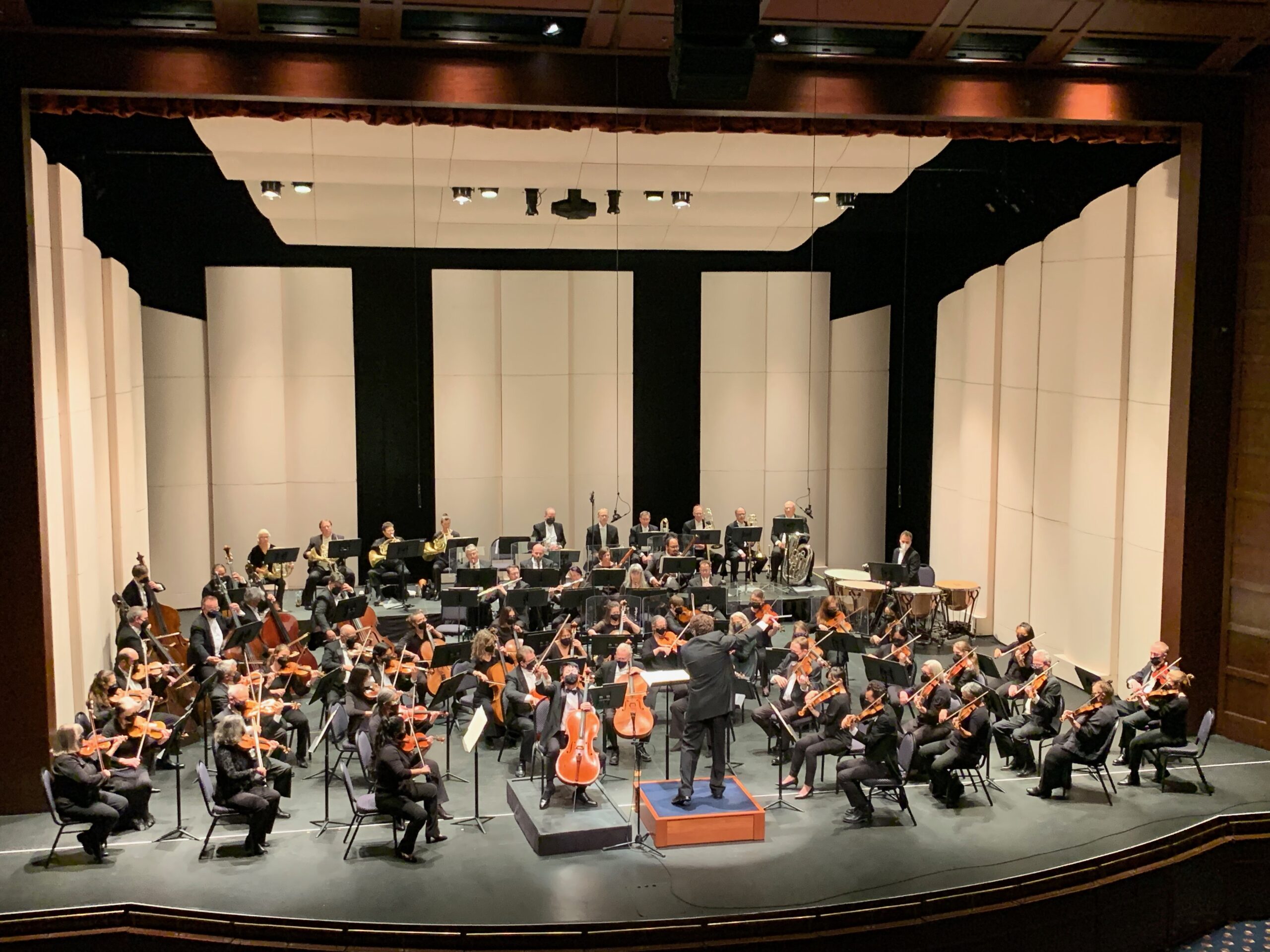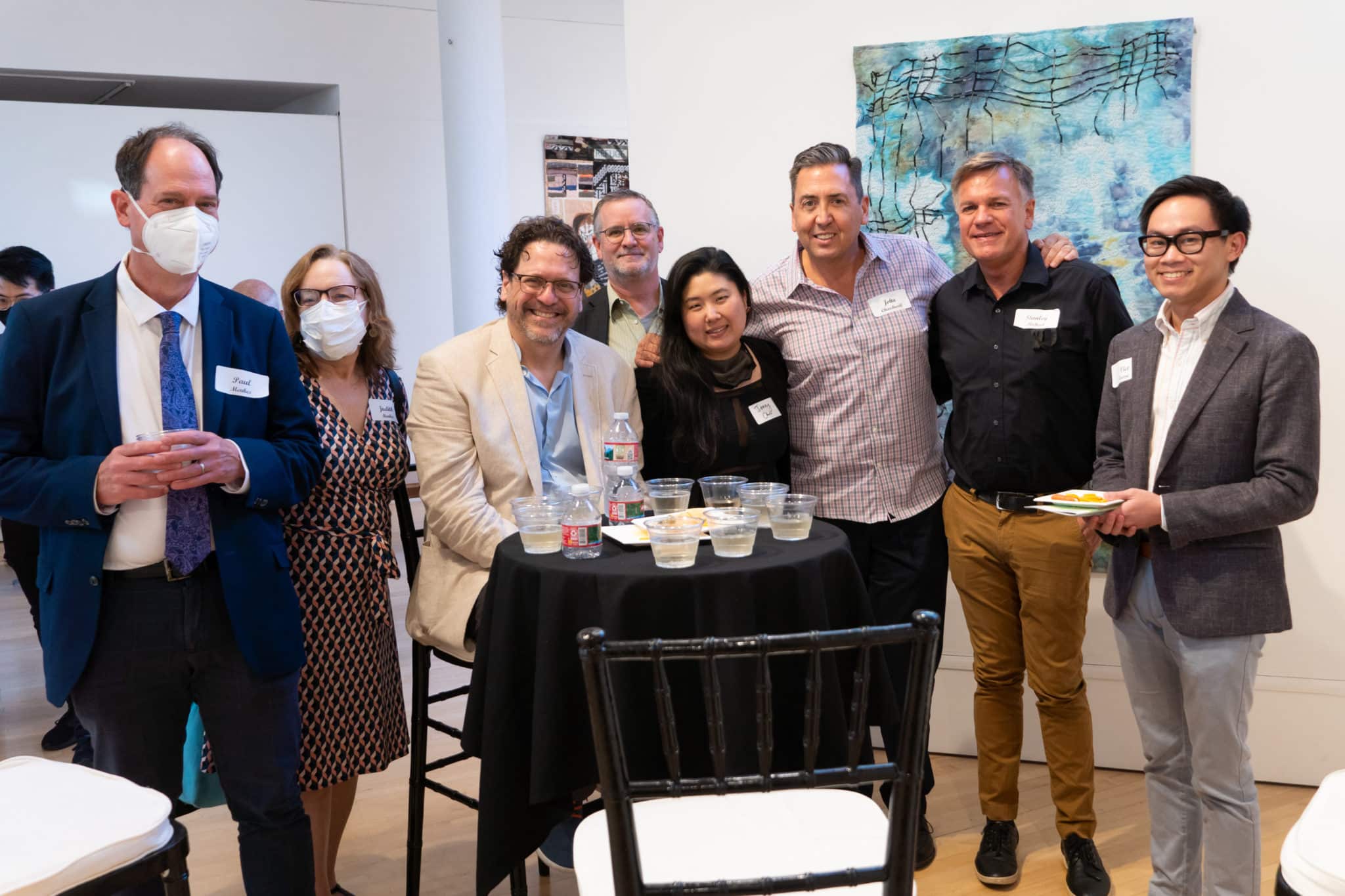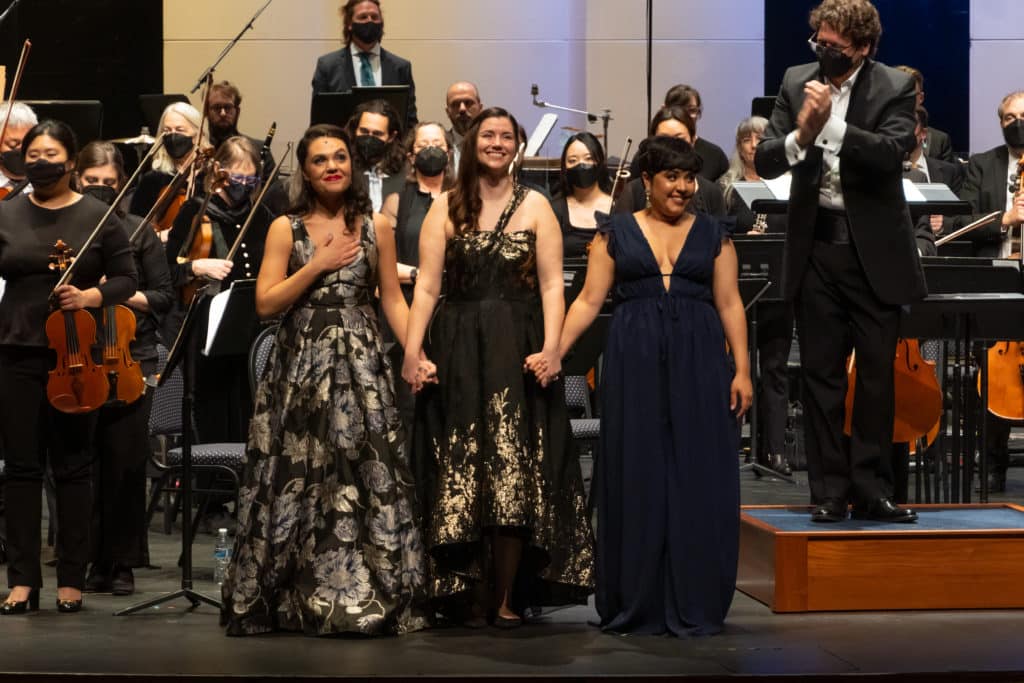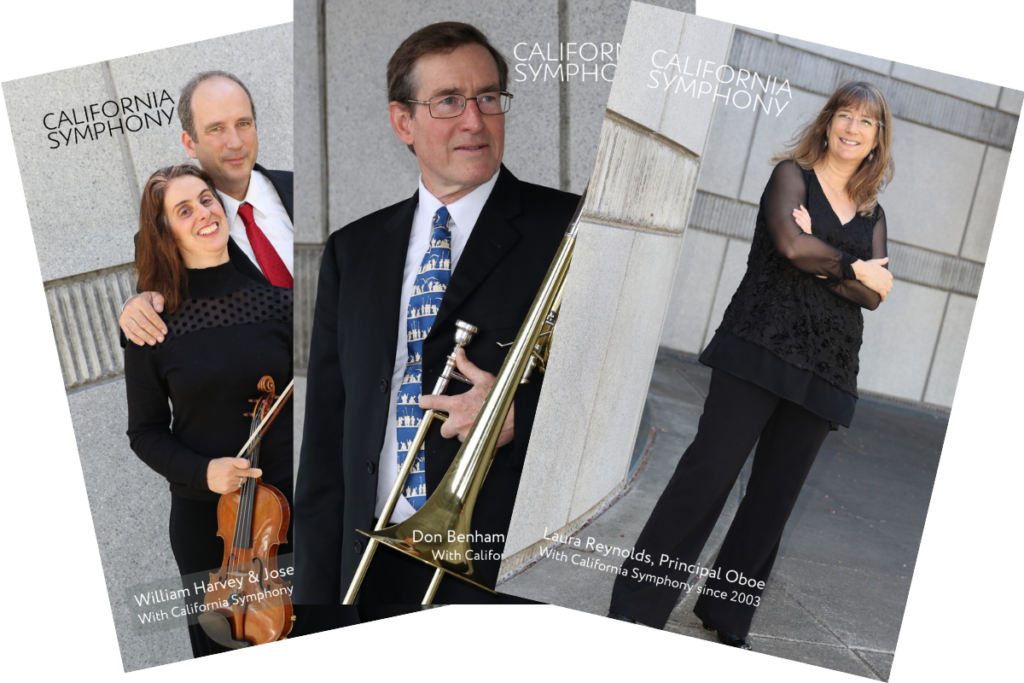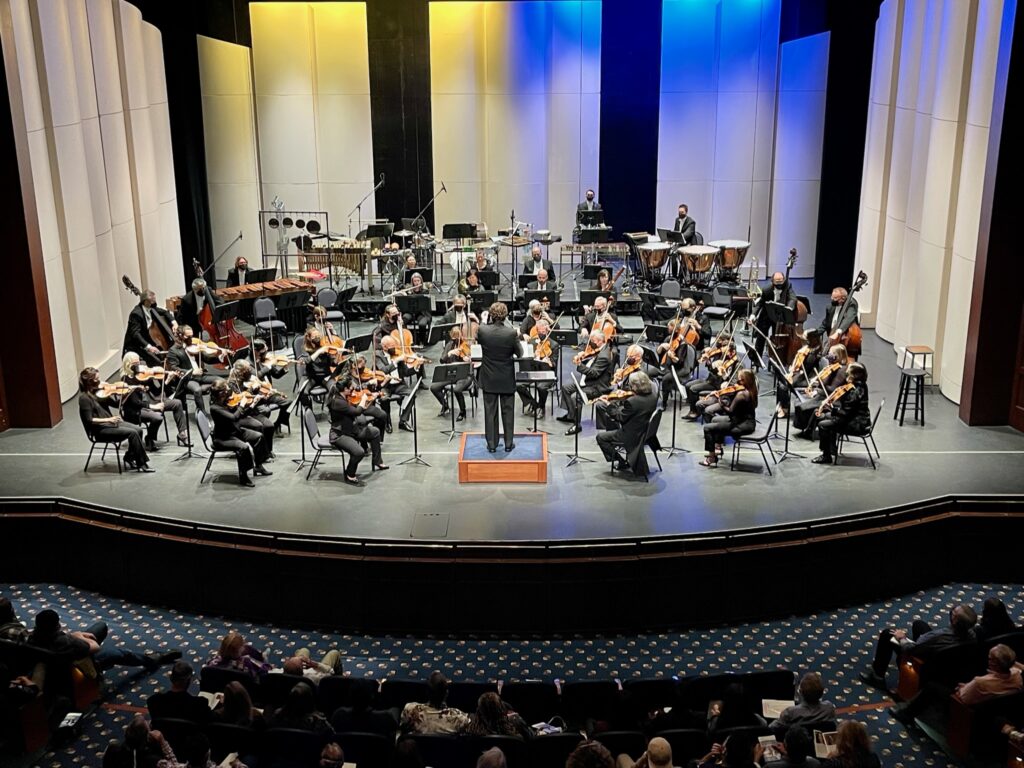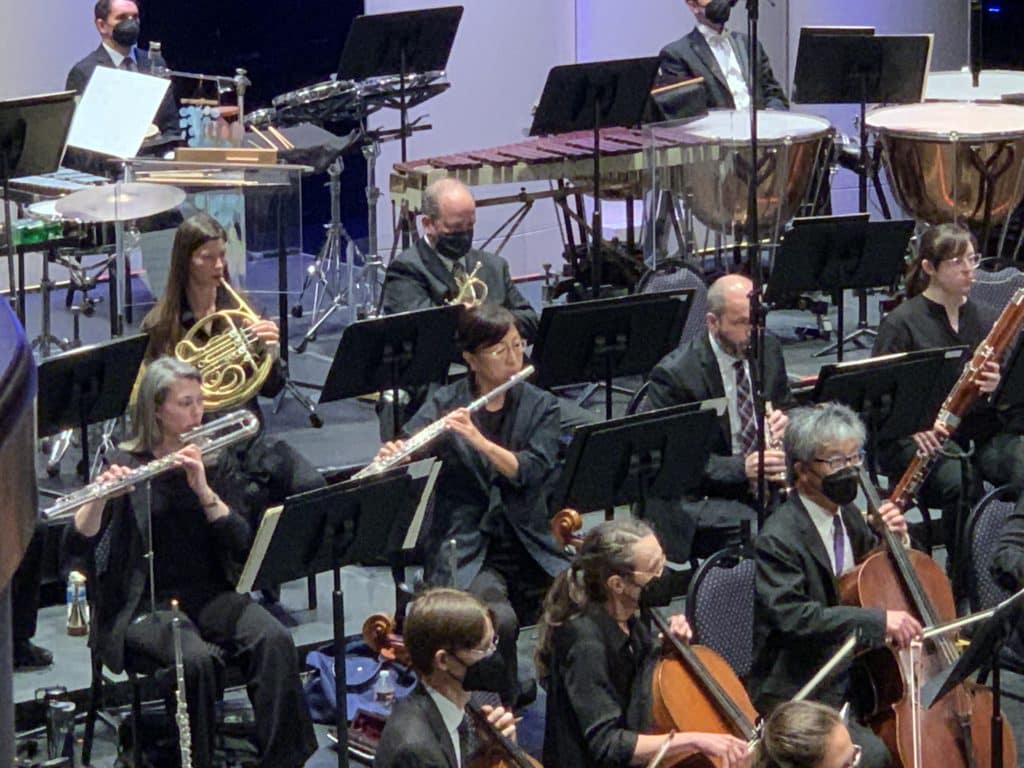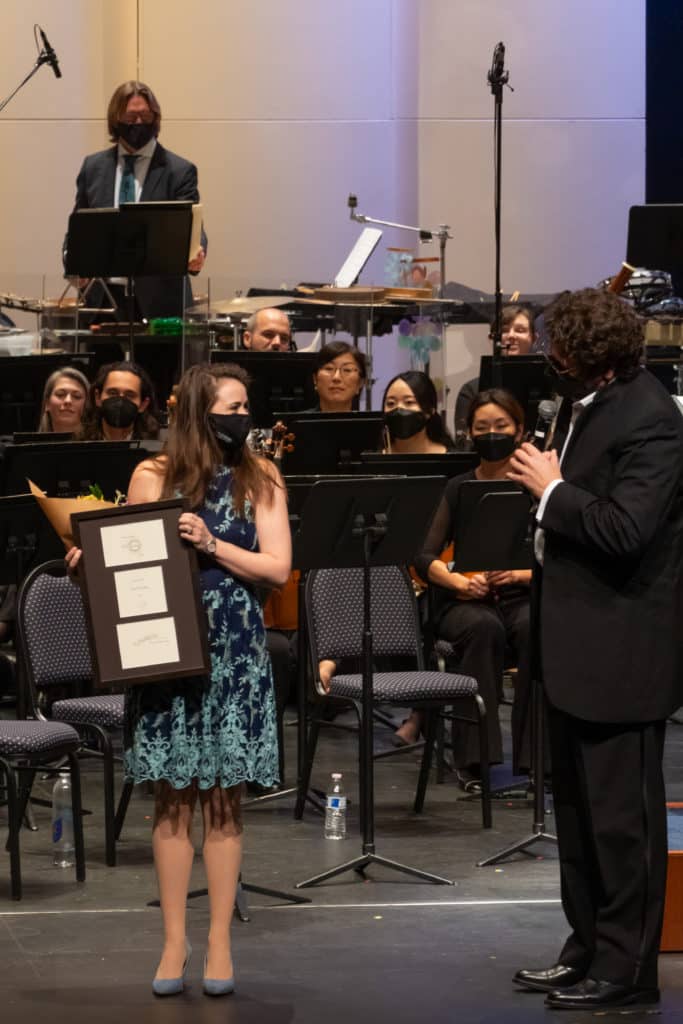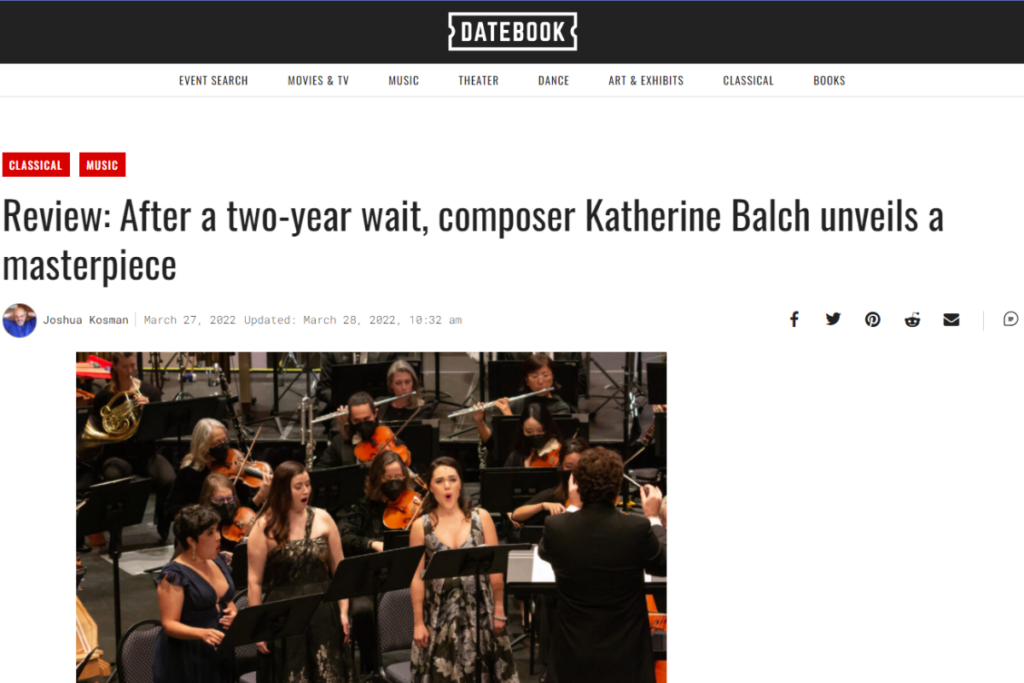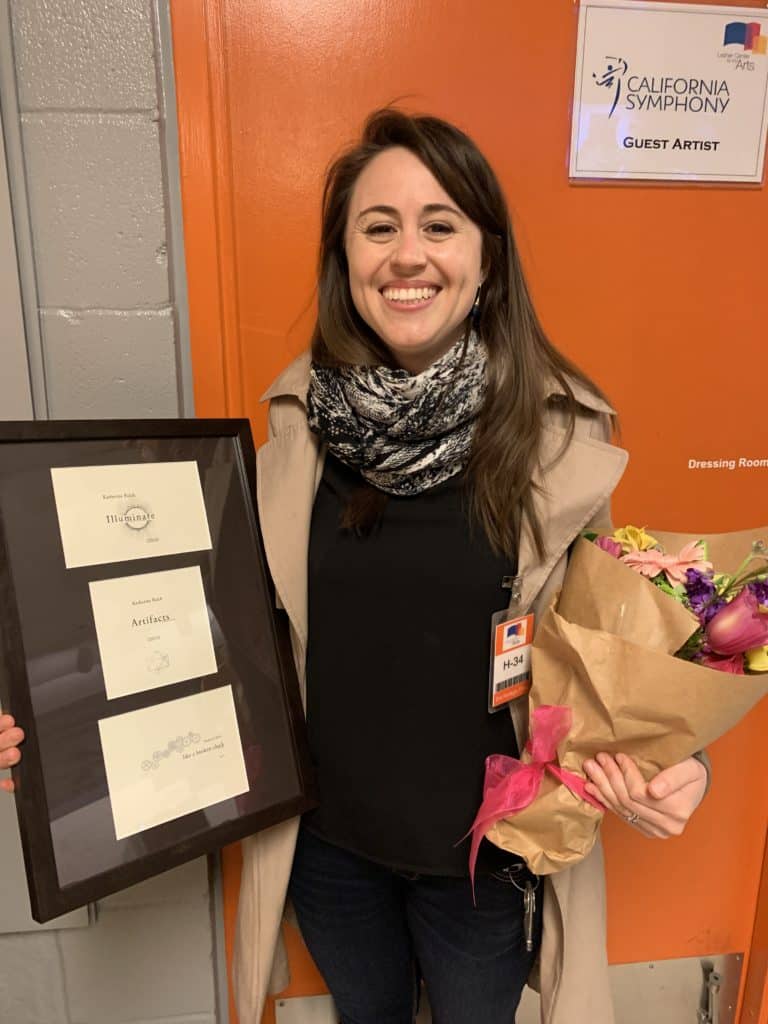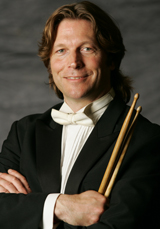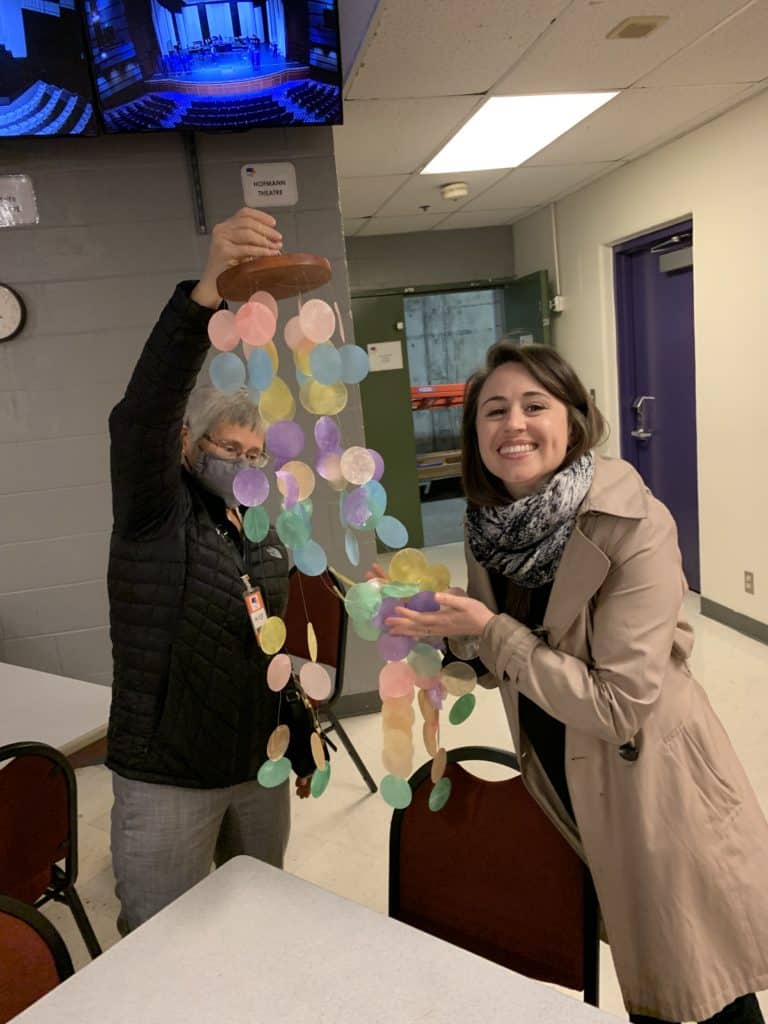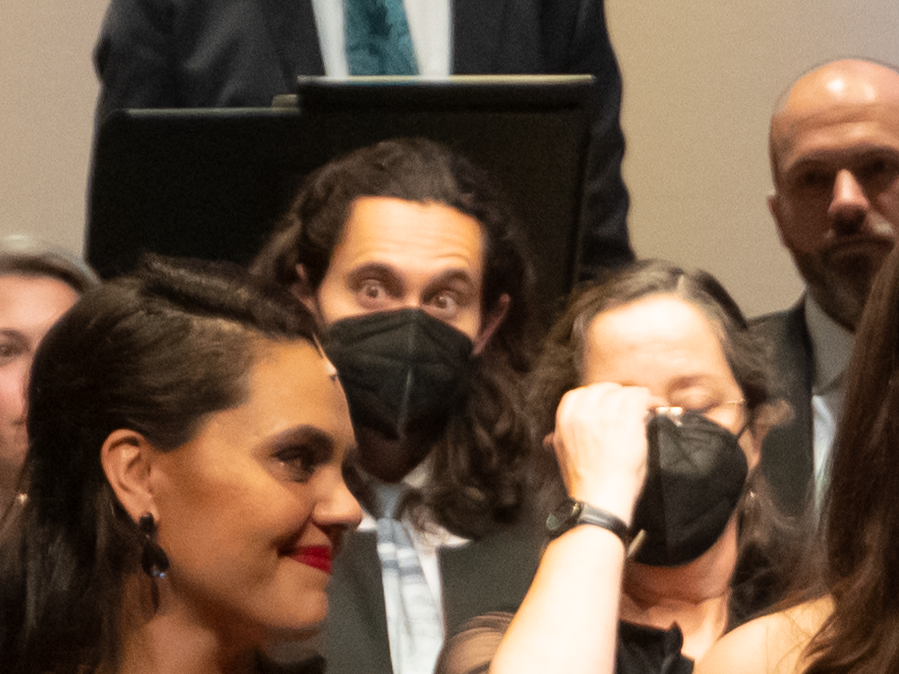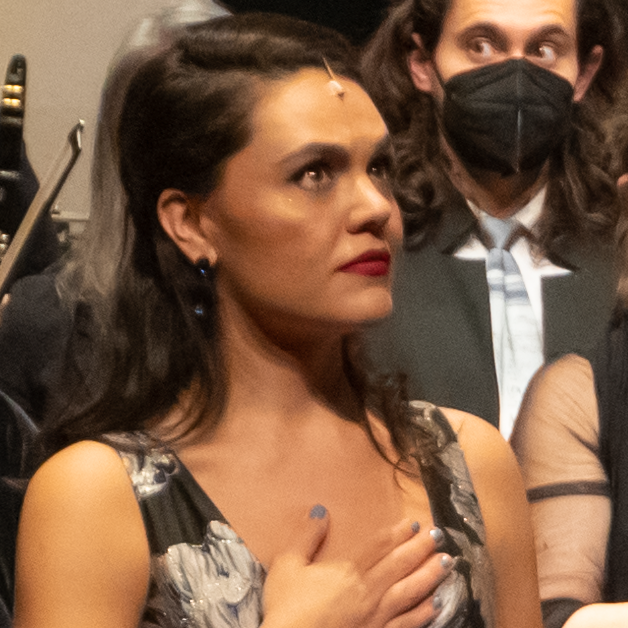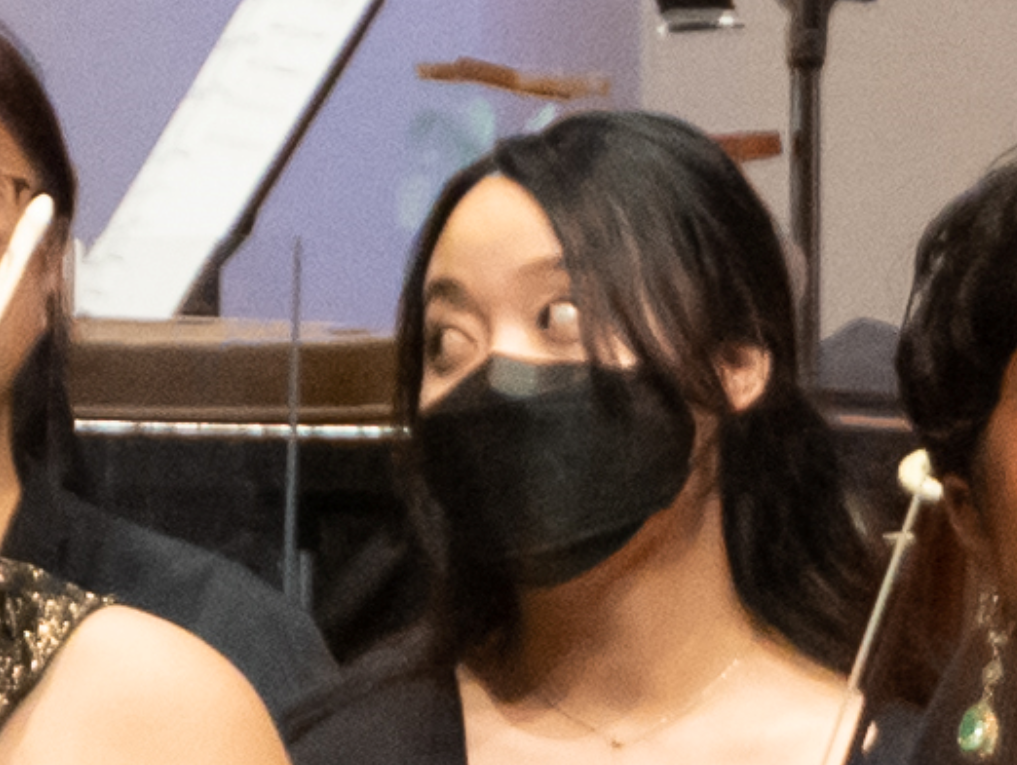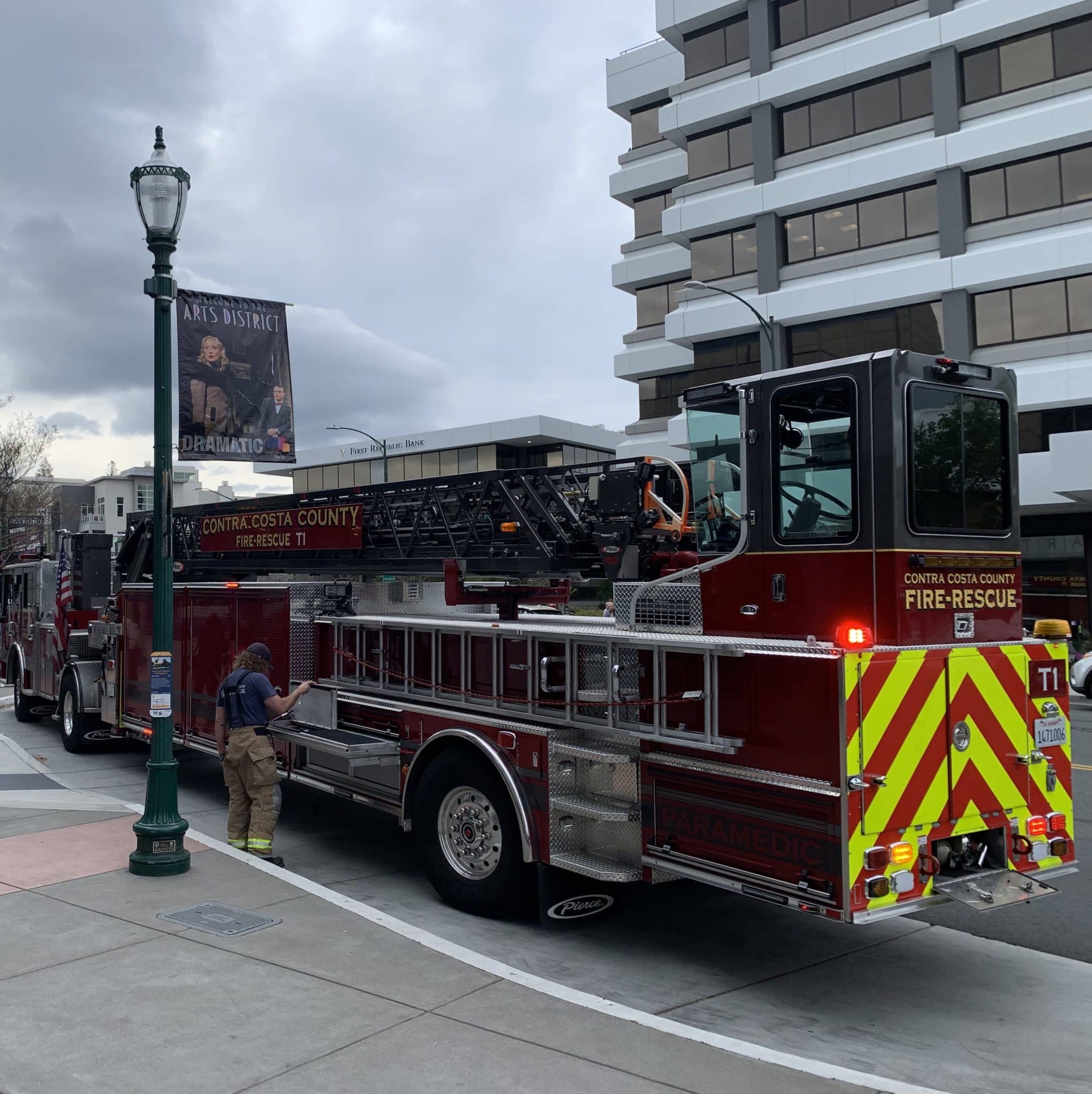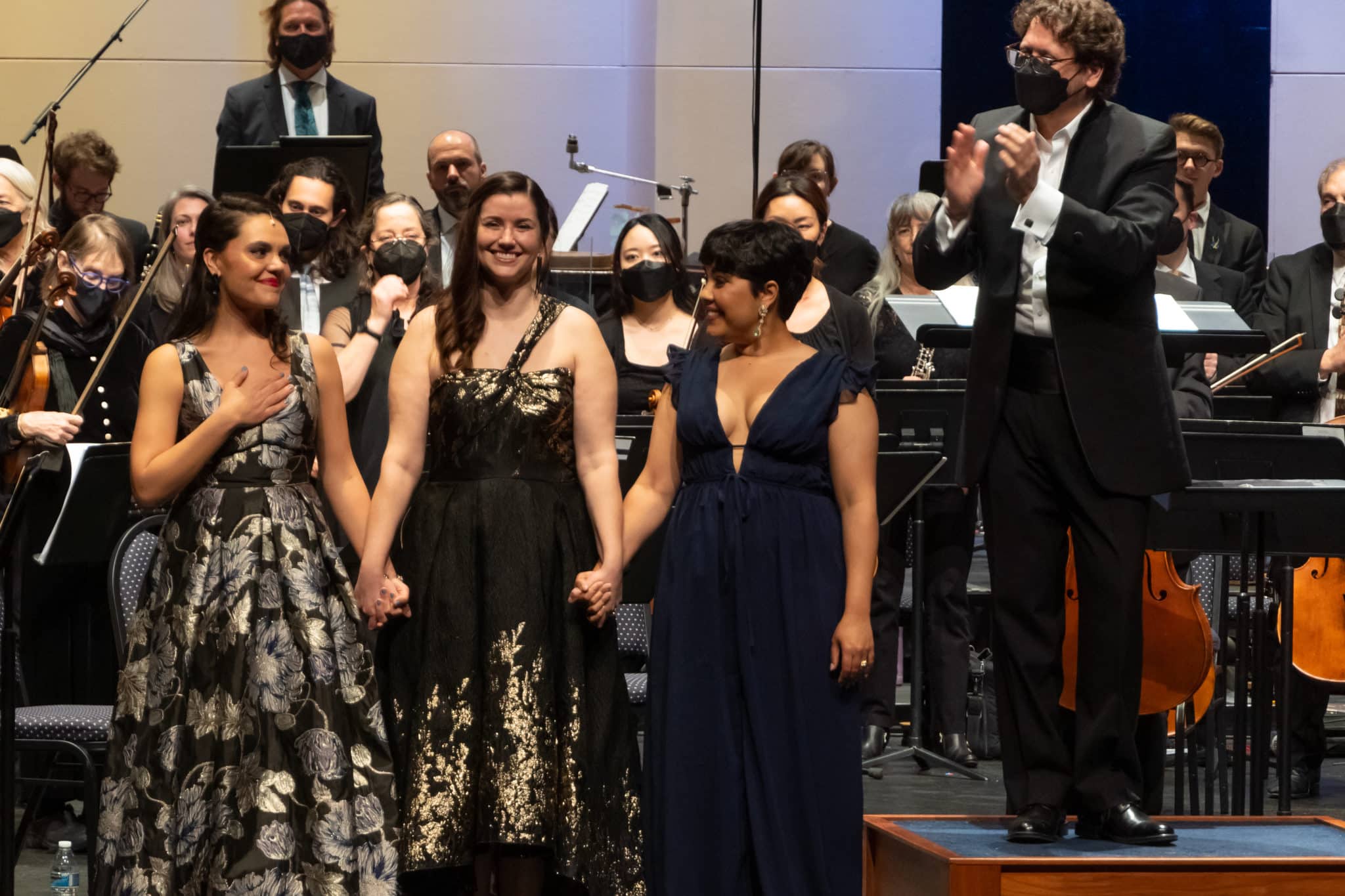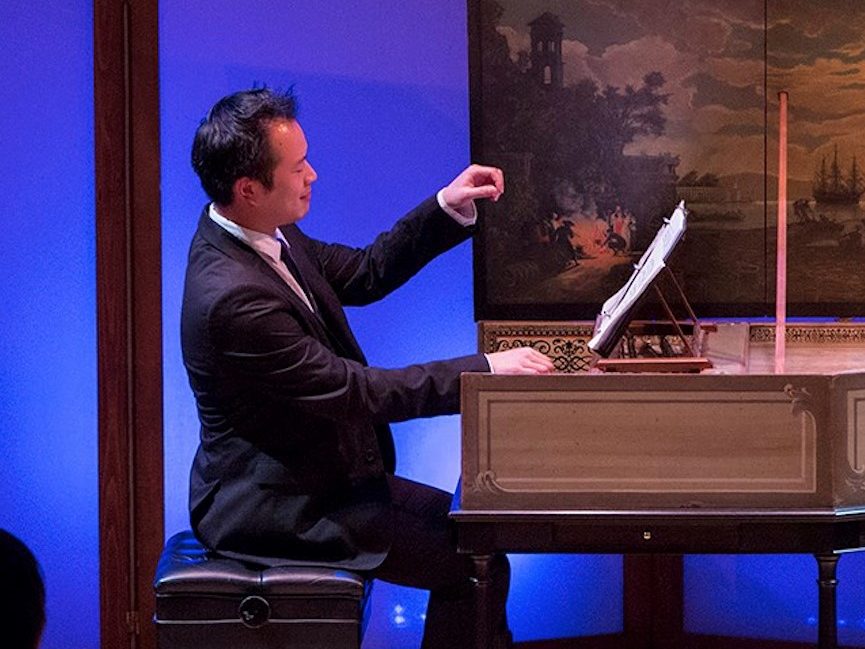Behind the Scenes at EPIC FINALE
Leave a Comment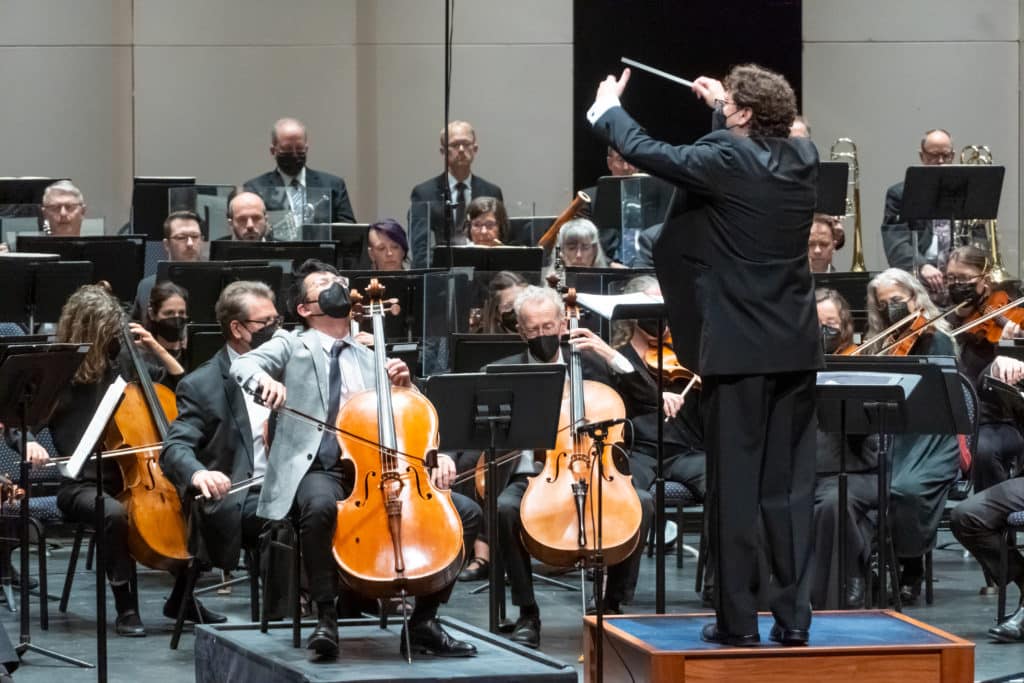
We did it! Together, we navigated ever-changing health and safety standards and shifting community sentiments around attending in-person concerts again to deliver all ten concerts in the 2021-22 season, featuring amazing soloists like pianist Adam Golka, violin sensation Alexi Kenney, our own wonderful Concertmaster Jennifer Cho.
This weekend’s EPIC FINALE concert was a fitting exclamation point on the season, as audiences got to hear Viet Cuong’s Next Week’s Trees (live and in-person, not on a screen!), Nathan Chan’s beautiful rendition of Elgar’s Cello Concerto, and Tchaikovsky’s triumphant Symphony No. 5.
Thank you for being there to share these magical performances!
Here are a few highlights, pictures, and stories from backstage…
Who Moved the Basses?
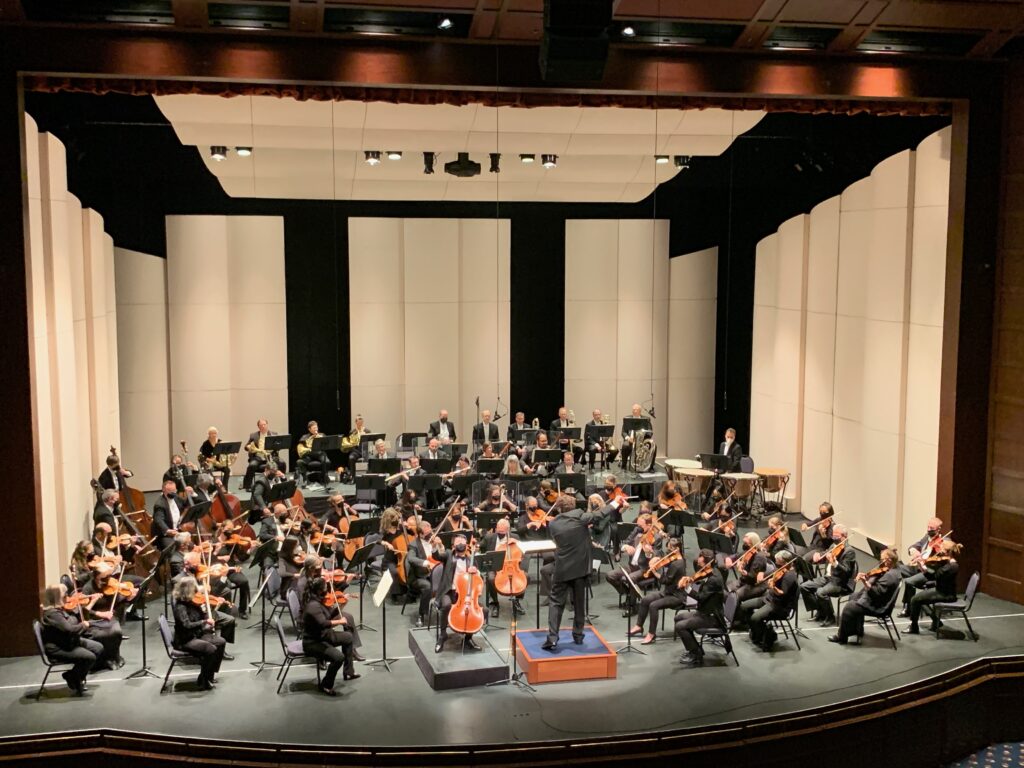
Our big, beautiful bass section can usually be found on the right side of the stage or on risers at the very back. For EPIC FINALE, keen orchestra-watchers may have noticed that they were all the way to the left. Not only that but the cellos were switched with the viola section.
Donato decided to set up the orchestra in this configuration to emulate how the Mariinsky Theater orchestra, which premiered his Symphony No. 5, was set up during Tchaikovsky’s lifetime, and which is still performing in this configuration to this day.
A Week with Resident Composer Viet Cuong
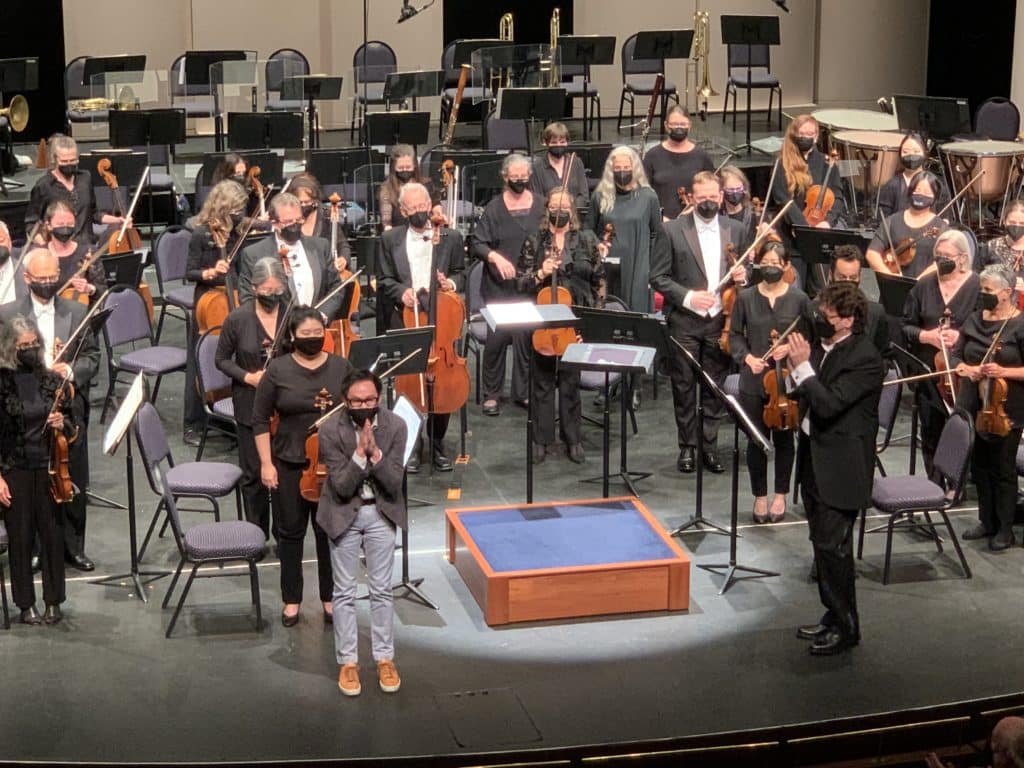
He’s been our resident composer since August 1, 2020, but we’re still getting to know Viet in the flesh because of You Know What. It was wonderful to spend time with 3-D Viet, and to honor the uplifting piece he wrote for our online finale one year ago with the in-person orchestra performance it deserved.
San Francisco Chronicle said Next Week’s Trees “combined Philip Glass’ harmonies with a punchy, unpredictable rhythmic palette.”
We said, “WE LOVED IT.”
NOTE: By popular demand, we will be sharing the full video of Next Week’s Trees soon! Subscribers, donors, and EPIC FINALE ticket holders will receive the link via email first, ahead of everyone else.
Prodigy and Mentor, Reunited
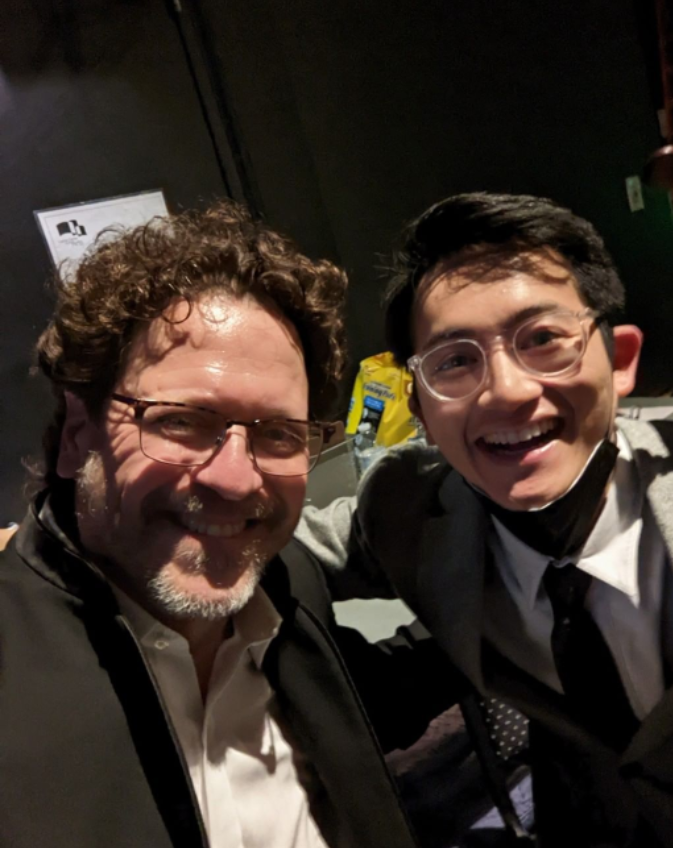
This was a Bay Area homecoming for cellist Nathan Chan, whose relationship with Donato goes back more than a decade, when Donato led the San Francisco Symphony Youth Orchestra.
Take 3 minutes and 34 seconds out of your day to enjoy this high-energy, foot-stomping rendition of Ginastera’s Estancia Suite, performed by the San Francisco Symphony Youth Orchestra in January 2011, and see if you can spot Nathan in the cello section.
And if you’ve been coming to California Symphony concerts for a while, in the same ensemble, you might also recognize previous guest artists violinist Alina Kobialka, flutist Annie Wu, and the exuberant Alexi Kenney as concertmaster, pirouetting at the end of the piece.
Glissando with a Capital G

Glissando
glis·san·do/ɡləˈsändō/ noun MUSIC
- a continuous slide upward or downward between two notes.
In the first half of the twentieth century, a 1934 recording of Leopold Stokowski conducting the Philadelphia Orchestra of Tchaikovsky’s Fifth Symphony was considered the gold standard. It was an age when conductors and instrumentalists still performed with much greater freedom of tempo and used very expressive gestures like glissando, in a style that was very similar to what Tchaikovsky would’ve been used to hearing. This was a significant factor in Donato’s interpretation of the piece this weekend and the result is just a little more…epic.
Says Donato: “Tchaikovsky’s Fifth Symphony is a part of the standard repertoire for almost every orchestra musician. They’ve played it multiple times and they know it well, so the challenge is to keep it sounding fresh – for musicians and audiences alike. Switching up the orchestra seating and adding these nuances keeps it interesting for everyone.”
Bonus Chills
Donato shared his fondness for the 1934 Philadelphia Orchestra recording with the orchestra during rehearsal on Thursday.
A member of the cello section then piped up that her grandfather had played cello on that very recording.
That Horn Solo by Meredith Brown
The French horn solo from the second movement of Tchaikovsky’s Symphony No. 5 never sounded better than this weekend.
The San Francisco Chronicle called it “a truly magnificent horn solo — firm, pliable and clear-eyed — from principal Meredith Brown.”
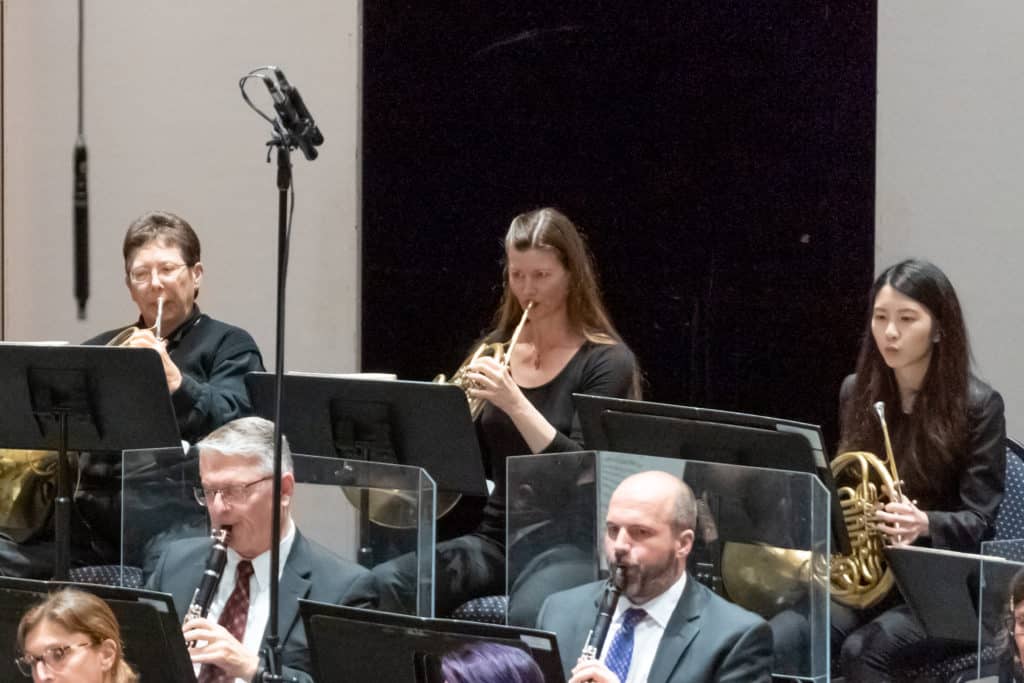
Soloist Turned Super Sub
Right after his astonishing performance of Elgar’s Cello Concerto, Nathan quietly assumed a spot at the back of the cello section for the Tchaikovsky piece, covering for a California Symphony musician who had got sick. Did you see him?
Loved It? So Did the Critics
We love your feedback! Whether it’s comments relayed to staff and musicians as you leave, phone calls, emails, or social media posts, we love to hear what you think.
As for the critics, their verdict was clear.
“Chan revealed both a profound technical gift and an expressive directness that many a better-known virtuoso could only envy. His string tone is rich and dark-hued, his intonation is fearlessly precise, and his mastery of musical narrative unfolds with unerring clarity.”—SF Chronicle
“The chemistry between soloist and conductor was evident at every point, as Cabrera’s supple baton beautifully telegraphed Chan’s moves to the orchestra.”—San Francisco Classical Voice
Your Next California Symphony Fix…
SYMPHONY ROYALE: Saturday, June 18 at the Scottish Rite Center in Oakland
Your final in-person California Symphony event of the 2021-22 season is Symphony Royale, featuring Sweden’s Queen of Swing Gunhild Carling and members of the orchestra. Cocktails, dinner, a gourmet dinner by McCall’s of San Francisco, dancing, and live and silent auction excitement… We are all so ready to celebrate the season with you!
Tickets and tables are on sale now and a portion of your ticket sale is a donation, for which you’ll receive a tax receipt after the event. Attend with friends or come by alone and we’ll seat you with other music-loving symphony supporters.
View the invitation here and join the party here.
2022-23 Season on Sale Now
Current subscribers—if you want to keep your seats, you have until May 31 to renew. (And if you want to switch seats, it’s still a good idea to renew early so you’re higher in the seat change priority order.)
New subscribers—3, 4 or 5 concerts subscriptions are currently available for as low as $99.
Renew online or call the office for assistance at 925.280.2490.
More California Symphony Dates for Your Diary…
CALIFORNIA SYMPHONY BROADCAST: Sunday, May 27 at 8pm on KDFC
Episode 8 – the final episode of the season – features the 2018 season opener, BEETHOVEN & BERNSTEIN. Charlie Albright plays Beethoven’s Piano Concerto No. 3.
FRESH LOOK: Tuesday evenings in July at Lafayette Library
Award-winning instructor Scott Foglesong returns with an updated 4-week course for classically curious adult learners. Pre-register now to be notified when Fresh Look goes on sale.
Putting You in the Picture
And finally, photos!
We had so much going on last week… Here are photo albums from the two concerts and our donor events of EPIC FINALE weekend.

